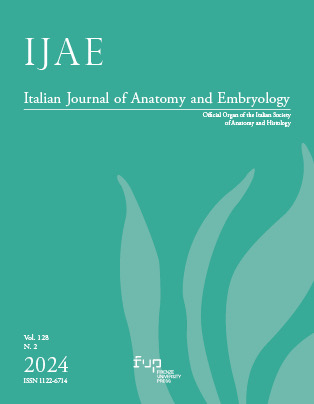Published 2024-12-31
Keywords
- double cystic duct,
- biliary variations,
- cadaveric dissection,
- biliary surgery
How to Cite
Copyright (c) 2024 Adrian Cotovanu, Mădălina Iuliana Bud, Alexandru Vlad Plesa, Ioana Cosma-Epure, Cătălin Cosma

This work is licensed under a Creative Commons Attribution 4.0 International License.
Abstract
Introduction. Rare but significant anatomical differences in the biliary ducts, such as having two ducts, can create challenges in surgeries like laparoscopic cholecystectomy, according to a study that examined a case of double cystic duct found during cadaver dissection and its implications in practice. Material and method. In the study, dissections were done on 25 cadavers at the Anatomy Department of the University of Medicine Pharmacy Science and Technology in Târgu Mureș, where a cadaver with a secondary cystic duct anomaly was observed. A series of measurements and histological examinations were conducted to validate the results and juxtapose them with prior literature. Results. The secondary cystic duct showed a shape resembling the letter “Y,” with separate insertions of the ducts at the common hepatic duct level with the same macroscopic anatomical features. Histological examinations revealed normal biliary epithelium and tubular shaped structure. Conclusion.Finding a secondary duct underscores the importance of vigilance during surgery because such variations can raise the chances of bile duct damage during gallbladder cholecystectomy. It is advised to use imaging, before surgery and cholangiography during surgery to manage the risks linked to these abnormalities.

